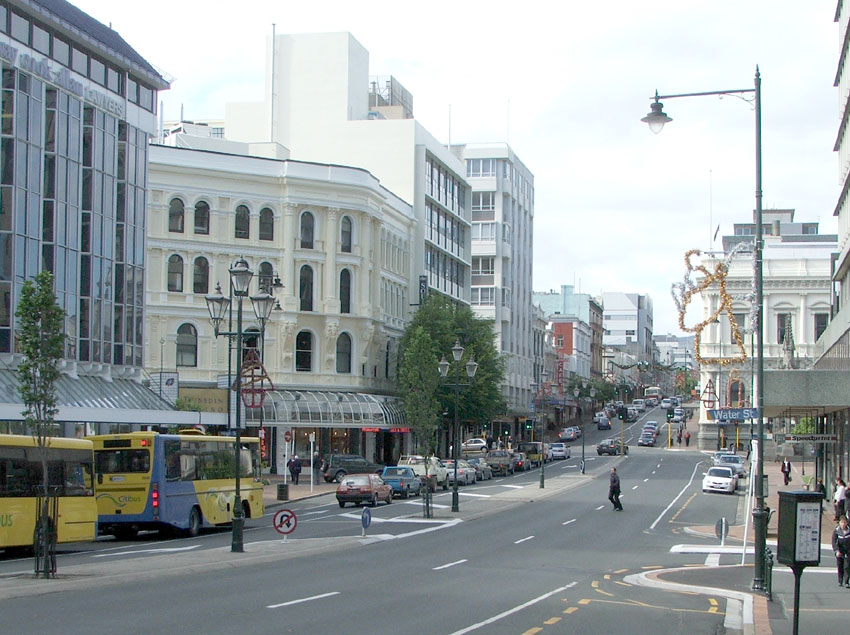13 Car use restrictions
13.0.1 Description
Car use restrictions can come in many forms and is one of the most hotly debated emission reduction initiatives due to its lack of efficiency and its restrictive nature. It is currently predominantly used by smaller cities, but many large urban areas are starting to adopt their own car restriction strategies as another way to combat greenhouse gas emissions. In reaction to the second oil shock in the 1970’s New Zealand implemented carless days. This system affected every owner of a private vehicle that ran on petrol that was under 2,000kgs (excluding motorbikes). Anyone who had a vehicle that fell into this category had to nominate a day of the week in which they were unable to drive their vehicle with each owner having to display a sticker on their windscreen that indicated what day of the week they were unable to use their car (New Zealand History, 2015).
New Zealand’s attempt at a car use restriction ended after less than a year but as global pressure to reduce emissions continues to climb more and more urban areas are starting to look at using some form of car use restriction. At the end of 2018, Madrid introduced restrictions against petrol-run vehicles that were produced prior to 2000 and diesel run vehicles that were produced prior to 2006. Vehicles that fell into these categories (and did not have an exemption) are restricted from entering the city of Madrid. This was then followed up in 2019 as Madrid limited all access to the centre of Madrid to only zero-emission vehicles (Caser Insurance, n.d.). Paris has also implemented tight car restriction to try decrease emissions. Cars produced before 1997 are not allowed in the city centre during weekdays, certain streets within Paris’s city centre are also limited to only electric vehicles and the first Sunday of every month is car free from 10am to 6pm (Bendix, 2019).
Outside of Europe, the ‘Hoy No Circula’ programme was first introduced in Mexico City to reduce the number of cars on the roads in one of Mexico’s most congested cities, but this has since been expanded to include all municipalities of the State of Mexico. This programme works in a very similar manner to what was implemented in New Zealand in 1979 and restricts vehicles with a number plate that ends in a certain digit from driving on a certain day during peak hours. For example, if your number plate ends in a ‘5’ or a ‘6’ you cannot drive during certain hours on Mondays (Mexperiance, 2022).
13.0.2 Type of travel affected
As car use restrictions can be implemented in various ways the type of travel can vary significantly from scheme to scheme. In Madrid it affects all ‘old’ petrol and diesel vehicles, in Paris the car use restriction can affect all vehicles that are not electric and in Mexico it effects all vehicles with internal combustion engines. Many of the restrictions associated with car use have a focus on days of travel rather than the actual vehicle and therefore it is commonly not the type of travel affected that is relevant but instead the day of travel.
13.1 How travel and emission effects, including long-run, can be measured and modelled
With many of the car use restriction schemes basing their scheme on the idea of restricting the days in which road users can use vehicles, road users can just rearrange their schedules so that they travel on another day which does not necessarily decrease the amount of vehicle kilometres travelled. Travel impacts, and emissions can be predicted based on price elasticity models but would need to be separated out by the day/week or by the age/type of the vehicles depending on what form of car use restriction scheme is being modelled.
New Zealand’s implementation of carless days was short lived as it had many deep-rooted issues that made it highly ineffective. One of the root causes of its failure was its way of handling exemptions. People that had an exemption were given an exemption sticker as opposed to a day of the week sticker. This resulted in the quick development of a black market for exemption stickers (legitimate and illegitimate). This meant many people without a legitimate reason to have an exemption sticker were obtaining them and driving all days of the week. There was and still is also a distinct inequality problem with the scheme. Households with more than one vehicle simply chose different days for their cars to not be allowed to drive and then can drive all seven days just as they had before the restriction was implemented.
Bogota implemented a car use restriction that restricted the use of certain vehicles during hours of peak traffic congestion (7:00-9:00am and 5:30-7:30pm) and the enforcement is based on the number plate on the vehicle. It was introduced in 1998 as a way of limiting traffic during peak hours of travel but in 2009 the restrictions were increased drastically, now limiting vehicle use for 14 hours per day (6:00am to 9:00pm). A study conducted in 2019 showed that both the initial peak hours phase of the restrictions and the more drastic version of the restrictions did not decrease CO2 emissions within in the city of Bogota. As a result of the change to the 14-hour restrictions traffic congestion has now risen during the peak morning hours and this has caused an in increase in CO2 emissions during these hours of 13%. This is because previously road users could avoid the charge by driving outside of peak hours but now with the extended hours this is less feasible, so road users have reverted back to driving within peak hours (Bonilla, 2019).
Mexico’s car use restriction scheme has been more successful regarding compliance than what was experienced in New Zealand. By using a number plate system instead of a sticker, it is a lot harder to drive on the restricted day or game the system, and enforcement is simpler. It does still incur one of the same inequality problems that was witnessed in New Zealand relating to multiple vehicles in a household (assuming they do not share the same last number plate digit). Taxi use within the city has also gone up since the implementation of the restrictions, implying people are still using cars to get around on days they are restricted from using their private vehicle. It is flaws like these that make this system inefficient and is why studies of Mexico City (where the scheme was first implemented) provide very little evidence that the programme has improved air quality and there has been no notable reduction in the quantity of people who are visiting the city by private vehicle (Davis, 2017).
13.1.1 Secondary impacts
Global and local evidence shows that car use restrictions have limited success and therefore do not significantly help decrease emissions. This is because there tends to be a lot of loopholes that people can take advantage of, allowing them to still travel via private vehicle as much as they would have before the restrictions were implemented. As with most of the emission reduction initiatives there is inequality effects, though with the car use restrictions these are escalated. This is because most car use restrictions do not apply to alternative fuel cell vehicles or in some cases just newer vehicles. To avoid the restriction, road users can purchase a vehicle that is exempt from the restriction, something that is less feasible for financially vulnerable households. On top of this, road users who already have access to multiple vehicles can generally avoid restrictions altogether. Another downside of using car restrictions as an emission reduction initiative is it creates relatively less revenue for local and national governments that could otherwise support complementary initiatives (eg, more public transport).
13.1.2 Key Information sources
Bendix, A. (2019, January 13). 15 major cities around the world that are starting to ban cars. Retrieved from Business Insider: https://www.businessinsider.com/cities-going-car-free-ban-2018-12
Bonilla, J. A. (2019). The More Stringent, the Better? Rationing Car Use in Bogotá with Moderate and Drastic Restrictions. The World Bank Economic Review.
Caser Insurance. (n.d.). Driving in Spain Requirements for Madrid Central. Retrieved from https://www.caserexpatinsurance.com/blog-typical-non-spanish/madrid-central-everything-you-need-to-know-about-downtown-madrids-driving-restrictions#:~:text=There%20are%20no%20restrictions%20for,can%20only%20use%20car%20parks.
Davis, L. W. (2017). Saturday Driving Restrictions Fail to Improve Air Quality in Mexico City. Scientific Reports.
Mexperiance. (2022, May 17). Mexico’s Hoy No Circula Vehicle Driving Restrictions. Retrieved from https://www.mexperience.com/mexicos-hoy-no-circula-vehicle-driving-restrictions/
New Zealand History. (2015, July 30). Remembering carless days. Retrieved from https://nzhistory.govt.nz/media/photo/carless-days#:~:text=Carless%20days%20were%20introduced%20on,that%20vehicle%20on%20the%20road.





























